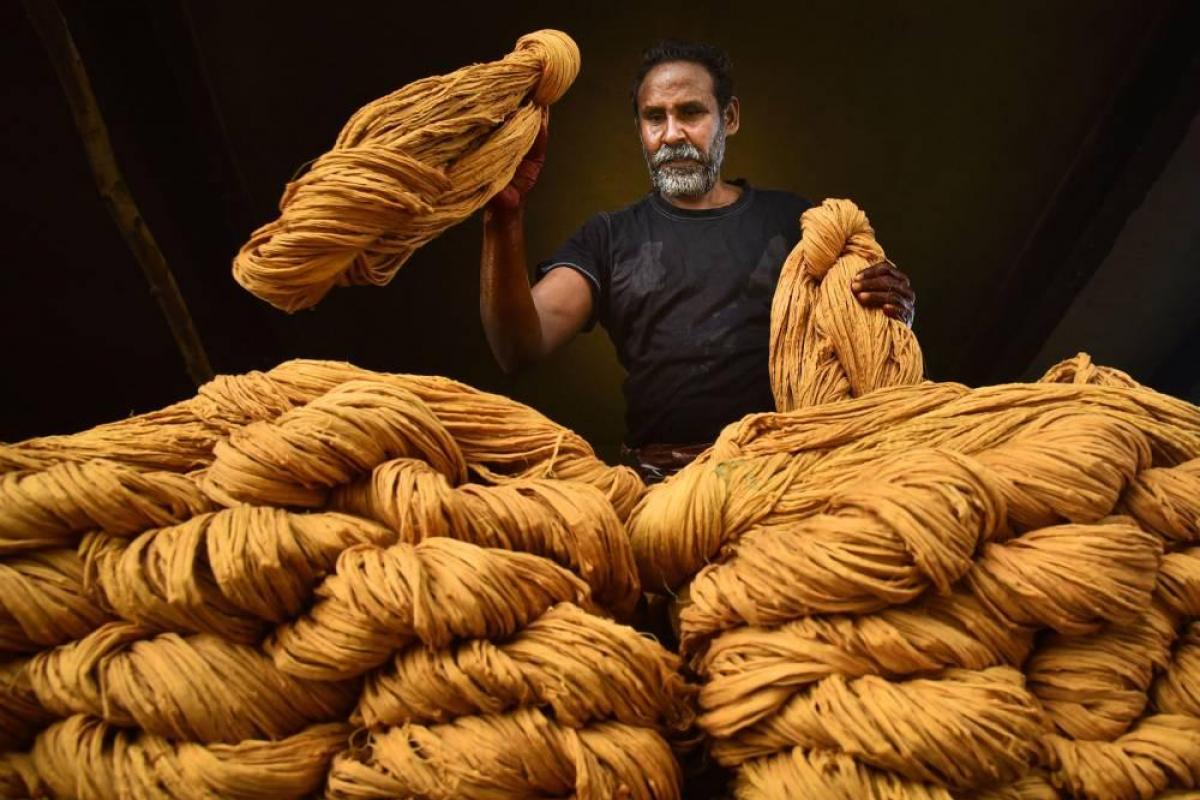
Handloom is torn between weak allocation and scrapping of board

The gradual decline in Centre’s budgetary allocation for the handloom sector is more worrying than the recent scrapping of the All India Handloom Board, which, in any way, had become moribund. The allocation for the sector dipped from ₹621.51 crore in the Union Budget 2014-15 to ₹485 crore in 2020-21.
This is in sharp contrast to the Centre’s claims of giving impetus to the development of the sector with the introduction of the All India Handloom Brand in 2015 to promote the sector, which is the second-largest employment provider after agriculture to India’s rural population.
To further expand the sector the Centre is currently implementing four schemes, namely the National Handloom Development Programme (NHDP), Comprehensive Cluster Development Scheme (CHCDS), Handloom Weavers Comprehensive Welfare Scheme (HWCWS) and Yarn Supply Scheme.
The development commissioner (DC) for handloom in the Union Ministry of Textiles implements these projects in coordination with state governments and Weavers’ Service Centres that function under the administrative control of the DC.
Under these schemes, financial assistance is provided for raw materials, purchase of looms and accessories, design innovation, product diversification, infrastructure development, skill upgradation, lighting units, marketing of handloom products and loan at concessional rates, Textiles Minister Smriti Zubin Irani told the Lok Sabha, in a written reply, last year.
The Centre had allocated ₹505.59 crore for these four projects in 2016-17 and had ultimately released ₹481.58 crore. In 2019-20, the allocation shrunk to ₹353.95 crore, of which it had only released ₹304.02 crore.
With the dip in central allocation, the contribution of handloom sectors in export too waned. The exports of Indian handloom products are valued at US$ 370.2 million in 2013-14. It dropped to US$ 343.69 million in 2019 fiscal. In the financial year 2020 (till November 2019), the export stood at US$ 226.05 million.
These figures were indicative that the handloom sector was not properly nurtured in the past few years and in 2014 there was even a move to dilute or scrap the Handlooms (Reservation of Articles for Production) Act, 1985, said an official of the department of micro small and medium enterprise and textile, West Bengal.
He said the scrapping of the advisory body such as the handloom board was expected, given the way the Centre was reducing the budgetary allocation for the entire sector.
On July 27, the Centre dissolved the board, which was formed on January 23, 1992, to advise the government in formulating policy for the overall development of the handloom sector under the chairmanship of the Textiles Minister. The members of the board were drawn from the Central and state government officials and non-official members from the handloom industry.
“The board’s role in encouraging the handloom sector, in any case, was very limited as there are too many bodies under the textile ministry to encourage handloom,” said the official, who did not wish to be named.
Association of Corporations and Apex Societies of Handlooms (ACASH), the National Handloom Development Corporation Limited (NHDCL) and the Handloom Export Promotion Council (HEPC) promote and develop the sector.
Besides, the government has also roped in the National Institute of Fashion Technology (NIFT) to provide inputs on design and latest fashion trends to improve marketing prospects of the handloom products.
Related News: Lockdown leaves handloom weavers hanging by a thread
“There are already too many players claiming to be promoting the sector formulating policies or giving inputs for our welfare. But on the ground, there is no visible improvement in our life. This sector is suffering because the policies are not framed consulting the real weavers,” said Hiralal Kalita, a weaver from Assam’s Sualkuchi, one of the world’s largest weaving hubs.
Pointing out how the government’s decision often did not sync with the ground reality, he said the decision to engage the NIFT to provide design input to the weavers was one such example. “Weavers hardly understand the technical jargon the faculties of the NIFT use. They need to be trained in more simple and rustic language considering their rural background,” Kalita said.
In this regard, he pointed out that the certificate courses or the diploma courses run by the Indian Institute of Handloom Technology (IIHT) for the weavers were helpful.
General Manager Chhattisgarh State Handloom Development and Marketing Cooperative Federation Limited A. Aiyaj too is of the view that the dismantling of the board, which was only an advisory body, will not have much impact on the ground.
“The board used to issue training certificates to the weavers. This will have to be now assigned to some other body. That is it,” Aiyaj said. The importance or lack of it could be gauged from the fact that the states hardly had any interaction with the board.
“For all matters related to handloom our (the state’s) point of contact at the Centre generally is the development commissioner or the ACASH and had hardly any interaction with the board,” said Ajai Singh, the deputy general manager (finance) of the Nagaland Handloom and Handicrafts Development Corporation Ltd.
(With inputs from Abhijat Shukla in Raipur)

